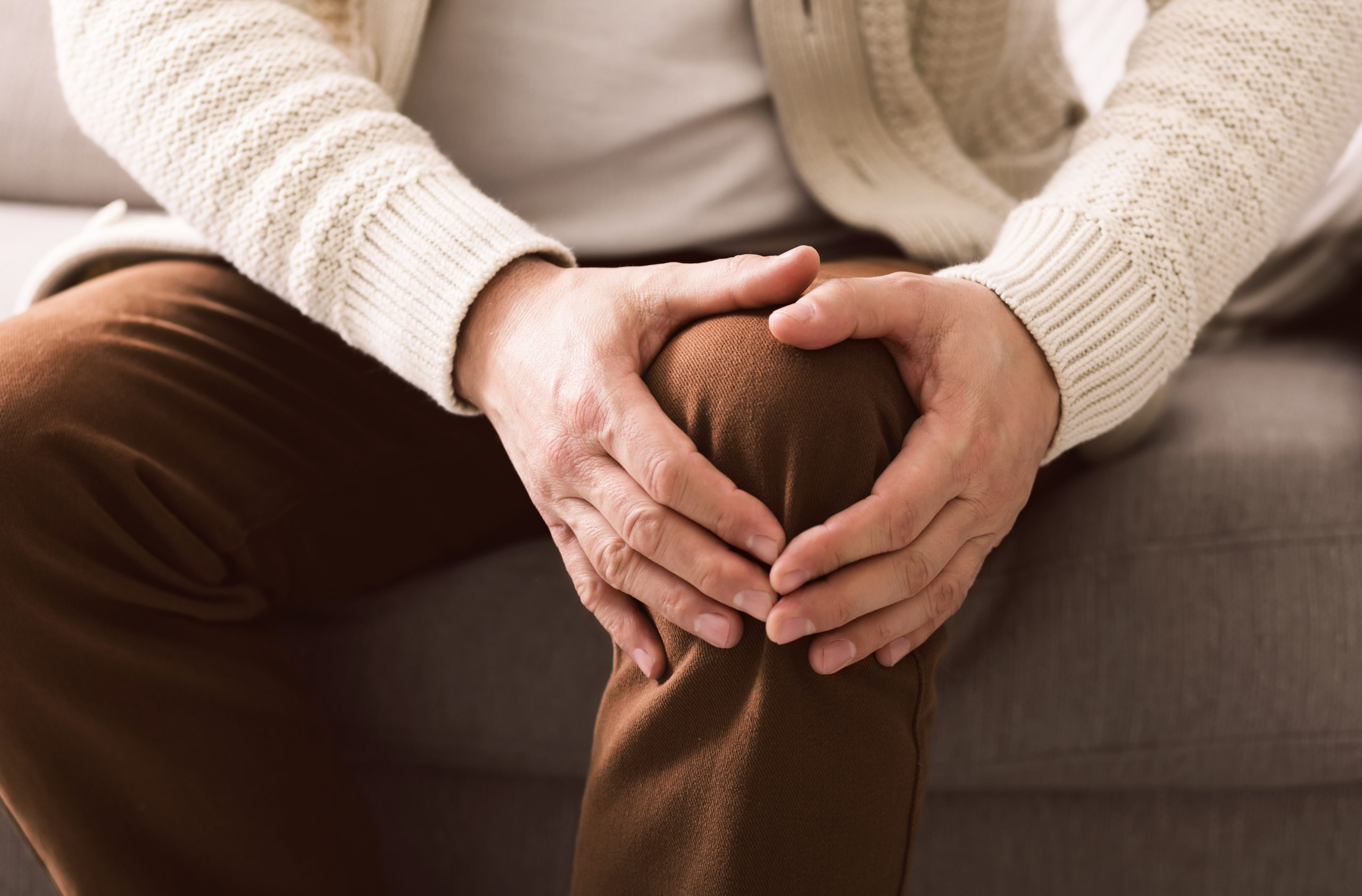
Knee pain is one of the most common complaints our allied health professionals see in clinic. But do not worry – physiotherapy has been proven to be extremely helpful in alleviating knee pain.[1]
Why is knee pain so common?
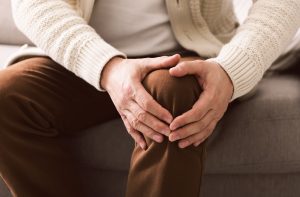 The knee is the largest shock absorbing joint in the leg and takes the brunt of our day-to-day loads. The knee joint is essentially made up of bones, cartilage, and ligaments. Four bones make up your knee joint: the thigh bone (femur), shin bones (tibia and fibula) and the patella (kneecap). These bones are lined with chondral cartilage and two meniscus (tough rubbery pieces of cartilage) that sit between your thigh and shin bones to help absorb shock and facilitate movement. There are four important structural ligaments that keep your knee stable and the muscles around your knee also support your joint. Any of these structures can be a source of pain.
The knee is the largest shock absorbing joint in the leg and takes the brunt of our day-to-day loads. The knee joint is essentially made up of bones, cartilage, and ligaments. Four bones make up your knee joint: the thigh bone (femur), shin bones (tibia and fibula) and the patella (kneecap). These bones are lined with chondral cartilage and two meniscus (tough rubbery pieces of cartilage) that sit between your thigh and shin bones to help absorb shock and facilitate movement. There are four important structural ligaments that keep your knee stable and the muscles around your knee also support your joint. Any of these structures can be a source of pain.
What are common knee injuries?
The knee can suffer from a range of different injuries from an irritation of some of the tissues to a sprain or tear of the tissue. Some of the common knee injuries that we see in clinic include patellofemoral pain syndrome (PFPS), knee osteoarthritis, meniscal injuries, and ligaments sprains. Factors that can contribute to the more “overuse” type injuries (e.g. PFPS) can include changes in the way in which muscles are controlling knee and lower limb movements, tightness in muscle tissue and/or poor biomechanics including foot and/or knee positioning during functional tasks.
Physiotherapists use an array of different treatment techniques to help with knee pain, but these are dependent on each person’s presentation and specific injury. However, after the initial signs and symptoms have settled, it is generally appropriate to start exercising and get the muscles working.
What can I do to treat knee pain?
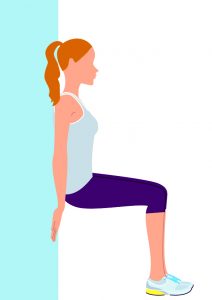
There are a lot of exercises that are designed to help manage knee pain. To make things easy, we have included 5 general exercises that you might find helpful:
1. Wall squats
slide down on the wall so your knees are at right angles and hold for 30-60 seconds x 3 sets, and 30 second rest between sets
Make sure your knees do not go over your toes and that your hip, knees, and ankles stay in alignment. Also, good to ensure you wear nonslip shoes when doing the above
2. Double leg squats
hold onto a bench (or post) and keep your hip, knee and ankle in line and slowly lower your bottom down so that your knee bends to approximately 45-60 degrees and then return to the starting position. Perform 12 repetitions x 3 sets, and 30 second rest between sets. Make sure your knees do not go over your toes and that your hip, knees, and ankles stay in alignment. Also, good to ensure you wear nonslip shoes when doing the above. This can be progressed to 1 leg squats, but depends on your injury and level of ability
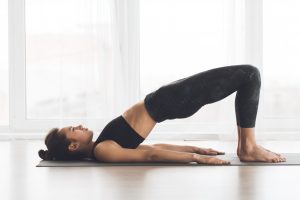 3. Glute bridge
3. Glute bridge
perform 30second hold x3set with 30 sec rest between sets, which can be progressed to a 1 leg glute bridge as able.
4. One leg calf raises
Perform 10-30 repetitions x3 set with 30 sec rest between sets, which can be progressed as able. Option to start as a 2 leg calf raise.
5. Foam rolling
This is a great tool to help reduce the tightness in your thigh (quadriceps) muscles. Pick a spot and roll slowly up and down the length of the muscle with a tempo of 3 seconds up and 3 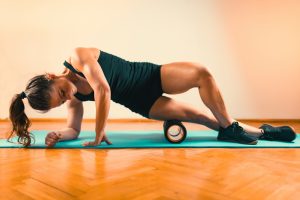 seconds down for 20 repetitions.
seconds down for 20 repetitions.
Please note foam rolling may not be appropriate for you depending on several factors such as age, mobility, balance, and injury, so always check with your physiotherapist first.
Following the above suggested exercises are a good guide to help you treat your knee pain. If you find that you’re still having some difficulties with your knee, physiotherapy can be really helpful and has shown positive results.[2]
We’re here to help you
Don’t let your knee or knee injuries keep you from enjoying life – the helpful physios at your local Allsports Physiotherapy can surely assist. To book an appointment you can visit our website, or click here to find your local Allsports clinic.
References
[1] Abdel-Aziem, A. A., Soliman, E. S., Mosaad, D. M., & Draz, A. H. (2018). Effect of a physiotherapy rehabilitation program on knee osteoarthritis in patients with different pain intensities. Journal of physical therapy science, 30(2), 307–312.
[2] Collins, N.J., Bisset, L.M., Crossley, K.M. et al.Efficacy of Nonsurgical Interventions for Anterior Knee Pain. Sports Med 42, 31–49 (2012).
